Учебное пособие Для студентов вузов Кемерово 2010
| Вид материала | Учебное пособие |
- Учебное пособие для студентов специальности 271200 «Технология продуктов общественного, 2012.38kb.
- Учебное пособие Для студентов вузов Рекомендовано методической комиссией механического, 1136.53kb.
- Учебное пособие для студентов библиотечного факультета Кемерово 1981, 1528.99kb.
- Учебное пособие для студентов педагогических вузов Москва, 712.47kb.
- С помощью программы Autocad учебное пособие Для студентов вузов Вдвух частях, 1127.91kb.
- Учебное пособие (Правление в России с IX по XXI век) для студентов всех специальностей, 1157.71kb.
- Учебное пособие для студентов специальности 260202 «Технология хлеба, кондитерских, 1941.61kb.
- Учебное пособие для вузов / Г. Р. Колоколов. М.: Издательство «Экзамен», 2006. 256, 66.37kb.
- Учебное пособие для студентов медицинских вузов Волгоград 2003г, 624.61kb.
- Учебное пособие Кемерово 2004 удк, 1366.77kb.
Text 2
Canada is a bilingual country with two official languages, English and French. The vast majority (75 percent) of Canada's French-speaking inhabitants live in the province of Quebec, which is located in the eastern part of the country but there are French-speaking communities throughout the country.
According to a 1991 census, French is the mother tongue of 82 per cent of Quebec's population and is spoken at home by 83 per cent of Quebecers.
Internationally, it is estimated that some 800 million people speak English and 250 million speak French. As a bilingual nation, Canada offers English as a Second Language (ESL) and French as a Second Language (FSL) training for students wishing to learn either or both languages.
Ex. 1. Answer the following questions according to the text.
1. What are the two official languages of Canada?
2. Where in Canada is French predominantly spoken?
3. Which of Canada’s official languages is used more throughout the world?
D. Education and Science.
Education in Canada comprises 10 provincial and 2 territorial systems, including public schools, "separate" schools, and private schools.
Public education in Canada is co-educational and free up to and including secondary school. The law requires children to attend school from the age of 6 or 7 until they are 15 or 16 years old. In Quebec, free education is extended to include attendance at the general and vocational colleges which charge only a minimal registration fee. The student pays tuition for most other post-secondary education.
The percentage spent on education in Canada is the highest among industrialized countries.
A Provincial Responsibility
There is no federal educational system in Canada: the Constitution vested the exclusive responsibility for education to the provinces. Each provincial system, while similar to the others, reflects its specific regional concerns and historical and cultural heritage. The provincial departments of education - headed by an elected minister - set standards, draw up curriculums and give grants to educational institutions.
Responsibility for the administration of elementary and secondary (or high) schools is delegated to local elected school boards or commissions.
Post-Secondary Education
Until the mid-1960s, post-secondary education in Canada was provided almost exclusively by its universities. These were mainly private institutions, many with a religious *affiliation. However, as the demand for greater variety in post-secondary education rose sharply and enrollment *mushroomed, systems of publicly operated post-secondary non-university institutions began to develop.
*affiliation – присоединение
*to mushroom – быстро распространяться
Ex. 1. Answer the following questions.
- What systems does education in Canada comprise?
- Speak on public education and free education.
- How much does Canada spend on education?
- Is there a federal educational system in Canada?
- What does each provincial system try to reflect in education?
- Speak on post-secondary education in Canada.
E. Inventions
Canada has been home to a surprising number (relative to population) of world-renowned inventors. Here are just some of the incredible things that have been invented in Canada and/or by its citizens.
Major Inventions
The first long-distance telephone calls were made by Alexander Graham Bell between the Ontario communities of Mount Pleasant and Brantford, and between Brantford and Paris, in 1876.
The first geostationary domestic telecommunications satellite in the world was the Anik-A1 in 1972.
The world's first commercial fibre optics telecommunications network was the 3268 kilometres system created by SaskTel in Saskatchewan in 1982.
The world's first documentary film was "Nanook of the North", which was shot in Canada by Robert Flaherty in 1922.
Kerosene was developed by Abraham Gesner of Cornwallis, Nova Scotia, and its lighting properties were demonstrated in Charlottetown, Prince Edward Island, in 1846.
Henry Woodward of Toronto invented the first electric light bulb in 1874. He later sold a share in his patent to Thomas Edison, who designed a more practical bulb in 1879.
The greatest contribution to nuclear theory at a Canadian university was Ernest Rutherford's theory of atomic structure, which he developed while at McGill University in 1902. It earned him the Nobel Prize in 1908.
The first frozen food sold to the public was Ice Fillets frozen fish, which went on sale in Halifax, Nova Scotia in 1929.
J.J. Wright of Toronto built the first electric railway with overhead wires with an electric pole connected to the car to avoid the rain and snow which frequently short-circuited streetcar rails.
Hockey is known to have been played in Halifax and Kingston in the 1850s. The first public exhibition of the modern game took place at the Victoria Rink in Montreal in 1875.
Basketball was invented by James Naismith of Almonte, Ontario, and first played at Springfield, Massachusetts, where Naismith was a physical education instructor, in 1892.
Five-pin bowling was invented by Т.Е. Ryan of Toronto in 1909.
Doctors Frederick Banting and Charles Best, both of Ontario, discovered insulin in 1921.
Less Known Inventions: ear piercer; hair tonic; rollerskate; snowmobile; table hockey; washing machine; zipper.
Ex. 1. Answer the following questions.
- Canada is said to be the home of surprising number of world – renowned inventors. Can you name Canadian inventors?
- Who contributed to nuclear theory at a Canadian University?
- What is Alexander Graham Bell famous for?
- You do know the word “Kerosene”. Who developed it and its lighting properties?
- What sports games were invented in Canada?
- If you know any less known inventions developed in Canada, name them.
F. Stephen Leacock
(1896-1944)
Born in Swanmore, England in 1896 Stephen Leacock is one of Canada's great writers of humorous fiction. After many failed attempts at farming in England, South Africa and the United States, his father took the family to the Lake Simcoe area of Ontario. Leacock's father eventually abandoned the family, leaving his mother in charge of eleven children. Leacock was educated at the University of Toronto, and then went to the University of Chicago where he studied political economy. In 1903 he took a position as lecturer at McGill University, where he eventually became head of the Department of Economics and Political Science.
Leacock wrote much non-fiction, but he is best known for his humorous fiction. His first collection of humorous stories appeared in 1904, “Literary Lapses”. They were musings, parodies, satires, funny anecdotes and conversations. Since they were collected from various sources, the stories shared very little in common other than Leacock's sharp sense of humor. His two most important books of humor are “Sunshine Sketches of a Little Town” (1912) and “Arcadian Adventures with the Idol Rich” (1914). In the former, Leacock takes us to small-town Ontario, and while the people and practices of this town are clearly satirized, it is done with a great deal of affection. The latter takes place in a large American city and is much more scathing in its criticism of what Leacock saw as a hypocritical, self-serving and ultimately destructive economic upper-class.
Leacock also wrote extensively about humor, which he saw as the ultimate expression of human kindness and progress. He wrote about Mark Twain, Charles Dickens and others, and his thesis is most fully developed in “Humour and Humanity” (1937). While some critiqued his reliance on a "lesser" genre, Leacock remained dedicated to his first love, humor.
by Lee Skallerup
Ex. 1. Answer the following questions.
1. What was Leacock’s literary genre?
2. Say some words about Leacock’s educational career.
3. When did his first collection of humorous stories appear?
4. Name his two most important books of humor.
5. What did Leacock write about humor?
G. Your First few Days in Canada
- Finding a place to live
To buy or to rent?
When you first arrive in Canada, you will probably be living in a temporary home. You will soon be looking for a more permanent place to live. Canada has many different types of housing and a wide range of prices. Finding the right place will take some time and effort. Your first decision will be whether to rent a house or an apartment, or to buy a house.
Whether you rent or buy will depend on your personal finances and whether you already have a job in Canada. Most newcomers decide they should first rent a house or apartment. This gives them more time to save money to buy a house and to decide where they want to live.
If you want to buy a house, unless you can pay the full price, you will need to get a long-term loan called a mortgage.
Types of Housing
• Furnished or Unfurnished: Furnished housing should include beds, tables, chairs, lamps, curtains, a stove and a refrigerator. Unfurnished housing may include a stove and a refrigerator, but not always.
• Room for Rent: This is usually in a house or an apartment that is owned or rented by other people. Everyone shares the kitchen and bathrooms.
• Bachelor or Studio Apartment: These are small apartments designed mainly for one person. They have one large room with a kitchen and a sleeping area, plus a separate bathroom.
• Duplex: This is a house divided into two separate apartments. It may be bought or rented.
• Townhouse: This is a small house joined to other houses. It may be bought or rented.
• Condominium: This is an apartment or townhouse that is individually owned, while “common areas” are jointly owned. As well as the mortgage payment and property taxes, each owner pays a monthly fee for maintenance.
How much will it cost?
You could expect to pay between $350 a month for a room, and $2,000 a month for a luxury apartment or a large house. Rental costs vary greatly across cities and across Canada. Housing is more reasonable outside the large cities.
Plan on spending 35 to 50 percent of your income on housing. This should include the cost of electricity, heating, telephone service and water.
As people in Canada tend to move in the spring and summer months, these are the best times to look for a home; there will be more choices available.
2. The Canadian Way of Life
Family Life
Many people in Canada find that it takes two incomes to raise a family, even though parents are having fewer children. Most mothers have a job outside the home, and in many families, both parents share the work of shopping, cooking, cleaning the house and looking after the children. Because divorce has become more common, there are many one-parent families in Canada. Most single parents "who raise their children on a full-time basis are women. There are also same-sex couples with children.
Youth and Their Parents
When children arrive in Canada, they usually learn about Canadian life quickly through schools, television, movies and music. If they need to learn English or French, they often learn it quite quickly. Parents find out about Canadian life differently, as they search for housing and work. They too may need to learn English or French, but often need more time than their children to do so.
If you have children, you will know that you see the world somewhat differently than they do, because you are older and have more life experience. After immigrating to Canada, however, you may find that these differences increase, because you are having different experiences of Canadian life. These differences affect the behaviour of аll family members and саn lead to tension in the family between parents and their children.
Discussing concerns with teachers, doctors, public health workers, social workers, settlement workers, and friends and relatives who have already settled in Canada will help уоu and your children understand your experiences and make good choices about your future.
3. Standards and Expectations
Some of Canada's standards for public behaviour may bе more conservative than you are used to, while others mау seem more liberal. For example, Canadians mау seem impersonal and cold to some newcomers; to others they mау seem overly friendly.
Important Social Standards
Social practices - not laws - govem many types of behaviour in Canada. Some traditions are well established and are politely but firmly enforced. For ехample:
Lining up, or queuing: People normally line up or queue according to the principle of “first-come, first-served." Тhеу will bе angry if you push ahead in а line-up instead of waiting your turn.
Not smoking in private homes: Most Canadians do not smoke. When you are in people's homes, you should always ask their permission to smoke. If they do not smoke themselves, they mау ask you to go outside to smoke.
Being on time: you should always arrive оп time - at school, at work and for any meeting. People who are often late mау bе fired from their jobs or suspended from school. Many Canadians will not wait more than 10 or 15 minutes for someone who has а business meeting. For social events, people expect that you will arrive within half an hour of the stated time.
Respect for the environment: Canadians respect the natural environment and expect people to avoid littering (dropping waste paper and other garbage оn the street or throwing it out of your car). Тhеу will expect you to carry your garbage unti1 you саn find а proper garbage саn.
Bargaining: Bargaining for а better price is not common in Canada, but there are some exceptions. For example, almost everyone bargains for а better price when buying а car or а house, or other ехpensive items such as furniture. People who sell things privately mау also bargain.
Smart shopping: Stores compete with one another to attract customers, so it is wise to check and compare prices at different stores before you buу.
Note: Тhе price marked оп goods in stores does not usually include the federal and provincial sales taxes, which add from 7 percent to 15 percent to the cost of an item, depending оп the province in which you buу it.
From an “Immigrant’s Handbook”
Tasks:
1. Read the passages of the text “Finding a peace to live” very attentively and get use of the information for yourself.
2. Make up a plan of how to find a place to live. Think of a place cost.
3. Describe the Canadian way of life.
4. Speak on important social standards, which govern many types of behaviour in Canada.
5. Which standards do you consider the best?
Classroom activities
1. Together We are Canada!
This is а роеm about Canada that you саn read or that students саn present in the form of а skit.
READ:
You саn do it with felt board characters ог with puppets made by students to wave during the appropriate portion of the роеm.
SKIT:
If presenting it as а skit, have the students split up into small groups to represent each province. They саn memorize their portion of the роеm оr you саn have а separate group of students do the reading.
Have the students make some props for each verse to wave during their verse and the final verse of the роеm.
| Verse | Prop Ideas |
| Му nаmе is British Columbia The jewel of the West Coast. Forestry and fishing are The things that 1 do most. | Make pretend fishing роlе and ахе out of paper towel rolls, string, poster board and poster paint. |
 | |
| Нi, I аm Alberta А wild west kind of place With cows and oil and mountains And lots of ореn space. | Wear cowboy hats or hard hats. Hold cow stuffed toys or bеаn bag animals. |
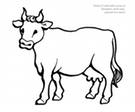 | |
| I аm Manitoba And I'm Saskatchewan. We're the golden prairies Where fields of wheat grow in the sun | Wear sunglasses or hold sheafs of wheat. Make а large sunshine from poster board. |
 | |
| Hi, I аm Ontario The home of government. То mе each year the leaders Of our democracy are sent. | Make а large Canadian Flag or small flags for each person to wave. |
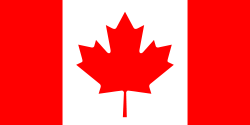 | |
| Bonjour, I аm Quebec Here French is mу language too. When I want to ask "How are уоu?" I say, "Comment t’allez vous?" | Make large trefoils from poster board. Make а sign that says "Bonjour" оn poster board. |
 | |
| Newfoundland, New Brunswick And Nova Scotia - those are we, We are Atlantic Provinces The three musketeers of the sea. | Wear rain gear (jacket, boots, hat) to look like а fishing boat captain. Hold fish or lobster stuffed or bеаn bag animals or make from poster board. |
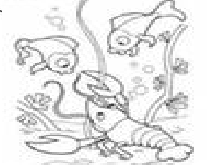 | |
| I'm Prince Edward Island And I know I mау bе small, But without mе аll the rest of уоu Would have nо potatoes at аll. | Наvе the smallest student (in height) represent PEI. Hold а real potato or make from poster board. |
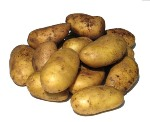 | |
| The Yukon, Nunavut and North West Territories are uр north. Through ice and cold and polar bears Few brave souls venture forth. | Dress very warmly (scarves, mits, hats, etc). Hold stuffed polar bear or bеаn bag toy or make from poster board. |
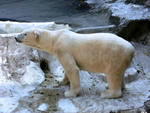 | |
| Together we are Canada Оnе nation strong and free With sharing, friends and happiness Forever we will bе! | Наvе everyone stand together with their props and recite this verse. Make use of a map of Canada. |
- Word Search
| В | R | I | Т | I | S | Н | с | о | L | U | М | в | I | А | |
| W | F | Х | F | А | I | Т | О | С | S | А | V | О | N | L | |
| W | D | N | А | L | D | N | U | О | F | W | Е | N | О | В | |
| L | N | Е | W | В | R | U | N | S | W | I | С | К | К | Е | |
| J | N | D | Х | М | А | N | I | Т | O | b | a | j | u | r | |
| E | F | I | N | K | W | O | L | L | E | Y | Z | I | Y | T | |
| S | B | N | K | E | D | M | O | N | T | O | N | V | E | A | |
| R | N | W | O | T | E | T | T | O | L | R | A | H | C | X | |
| O | E | K | T | S | E | W | H | T | R | O | N | G | N | A | |
| H | O | N | O | T | C | I | R | E | D | E | R | F | I | F | |
| E | S | Z | C | E | N | A | I | R | O | T | C | I | V | I | |
| T | Y | R | O | T | I | R | R | E | T | F | V | J | O | L | |
| I | G | Y | K | U | R | S | N | H | O | J | T | S | R | A | |
| H | O | A | G | E | P | I | N | N | I | W | G | E | P | H | |
| W | O | N | T | A | R | I | O | T | N | O | R | O | T | M | |
| Alberta | Northwest | St. John’s | |||||||||||||
| Fredericton | Province | Whitehorse | |||||||||||||
| Newfoundland | Victoria | Edmonton | |||||||||||||
| Prince Edward Is. | Yukon | New Brunswick | |||||||||||||
| Toronto | Charlottetown | Ontario | |||||||||||||
| Yellowknife | Manitoba | Territory | |||||||||||||
| British Columbia | Nova Scotia | Winnipeg | |||||||||||||
| Halifax | | | |||||||||||||
- Missing Word Quiz
Choose the correct word from the multiple choices for each gap. Write down the word which correctly fills the gaps in the text below.
A land of (1)_________
| a. small | b. vast |
| c. beautiful | d. vastly |
distances and rich natural resources, Canada became a self-governing (2)_________
| a. dominion | b. domain |
| c. nationality | d. region |
in 1867 while retaining (3)_________
| a. family | b. tied |
| c. ties | d. threads |
to the British crown. Economically and technologically the nation has developed (4)____________
| a. of parallel | b. parallel |
| c. in parallel | d. on parallel |
with the US, its (5)___________
| a. cousin | b. sister |
| c. neighbor | d. pupil |
to the south across an unfortified (6)__________
| a. frontier | b. bordering |
| c. border | d. line |
Its paramount political problem continues to be the (7)_______
| a. relationship | b. paternity |
| c. relation | d. related |
